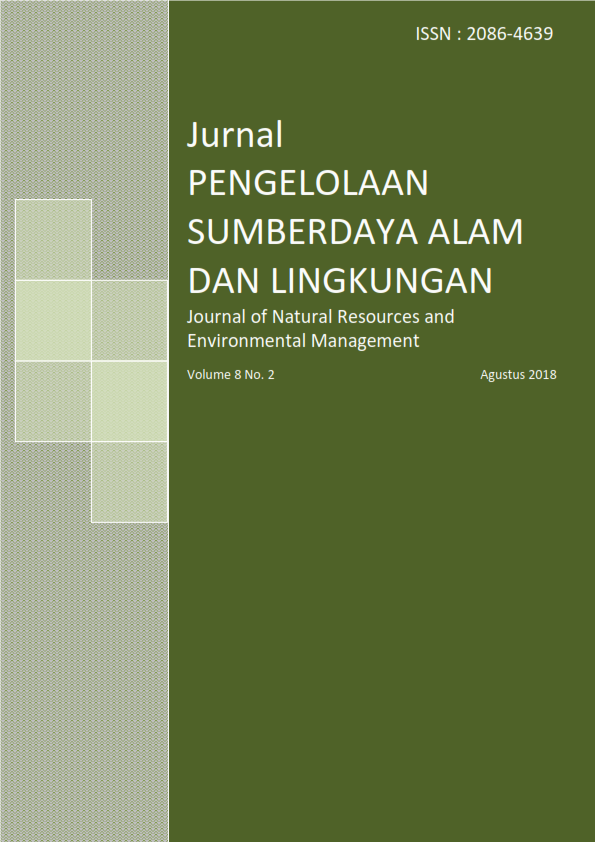ANALISIS PERUBAHAN PENGGUNAAN LAHAN DAN DEBIT ALIRAN DI SUB DAS CICATIH
Abstract
References
Asdak, C., 2004. Hidrologi dan Pengelolaan Daerah Aliran Sungai. UGM Press, Yogyakarta.
Hardjowigeno, S.,Widiatmaka, 2007. Evaluasi Kesesuaian Lahan dan Perencanaan tata Guna Tanah. UGM Press, Yogyakarta.
Hidayat, F., 2014. Optimalisasi Penggunaan Lahan untuk Pengembangan Sumber Daya Air DAS Mahat Hulu di Kabupaten Lima Puluh Kota Sumatera Barat. Disertasi. Sekolah Pascasarjana, Institut Pertanian Bogor, Bogor.
Miller, J.D., H. Kim, T.R. Kjeldsen, J. Packman, S. Grebby, R. Dearden, 2014. Assesing the impact of urbanization on storm runoff in a peri-urban catchment using historical change in imprevious cover. Journal of Hydrology 515, pp. 59-70.
Mubarok, Z., 2014. Kajian Respons Penggunaan Lahan Terhadap Karakteristik Hidrologi DAS Way Betung. Tesis. Sekolah Pascasarjana, Institut Pertanian Bogor, Bogor.
Peraturan Menteri Kehutanan Republik Indonesia, 2014. Permenhut Nomor: 61/Menhut-II/2014 tentang Monitoring dan Evaluasi Pengeloaan Daerah Aliran Sungai. Tanggal 29 Agustus 2014.
Peraturan Pemerintah Republik Indonesia Nomor 37 Tahun 2012 tentang Pengelolaan Daerah Aliran Sungai. Tanggal 1 Maret 2012.
Sulaeman, D., 2016. Simulasi Teknik Konservasi Tanah dan Air Metode Vegetatif dan Sipil Teknis Menggunakan Model SWAT. Tesis. Sekolah Pascasarjana, Institut Pertanian Bogor, Bogor.
Tarigan, S.D., 2016. Land cover change and its impact on flooding frequency of Batanghari Watershed, Jambi Province, Indonesia. Elsevier Procedia Environmental Sciences 33, pp 386-392.
Widiyaliza, S., 2015. Kajian Dampak Ekspansi Perkebunan Kelapa Sawit terhadap Fungsi Hidrologi DAS Batang Tabir Menggunakan Model SWAT. Tesis. Sekolah Pascasarjana, Institut Pertanian Bogor, Bogor.
Yusuf, S.M., 2010. Kajian Respon Perubahan Penggunaan Lahan terhadap Karakteristik Hidrologi pada DAS Cirasea menggunakan Model MWSWAT. Tesis. Sekolah Pascasarjana, Institut Pertanian Bogor, Bogor.
Authors
Authors who publish with this journal agree to the following terms:
- Authors retain copyright and grant the journal right of first publication with the work simultaneously licensed under a Creative Commons Attribution License that allows others to share the work with an acknowledgement of the work's authorship and initial publication in this journal.
- Authors are able to enter into separate, additional contractual arrangements for the non-exclusive distribution of the journal's published version of the work (e.g., post it to an institutional repository or publish it in a book), with an acknowledgement of its initial publication in this journal.
- Authors are permitted and encouraged to post their work online (e.g., in institutional repositories or on their website) prior to and during the submission process, as it can lead to productive exchanges, as well as earlier and greater citation of published work (See The Effect of Open Access).






